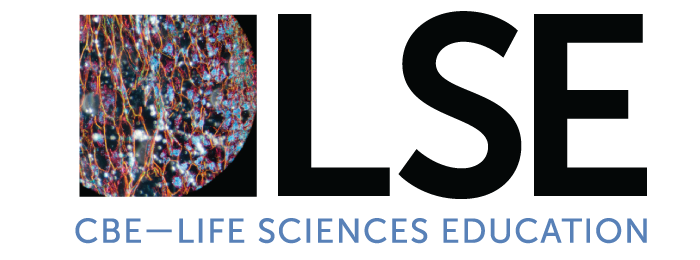References
This page contains all the references for each section of the Modeling in the Classroom Evidence-Based Teaching Guide. It also contains references that are of value but are not summarized in the individual sections.
Benefits, Definitions, and Underpinnings
OverviewScientific Process SkillSystems Thinking
- Gilbert, S. W. (1991). Model Building and a Definition of Science. J Research Sci Teaching 28: 73-79.
- Grosslight, C., Unger, E. J., & Smith, C. L. (1991). Understanding Models and Their Use in Science: Conceptions of Middle and High School Students and Experts. J Research Sci Teaching 28(9): 799–822.
- Harrison, A.G., & Treagust, D.F. (2000). A typology of school science models. Intl J Sci Ed, 22(9):1011-26.
- Justi, R. S., & Gilbert, J. K. (2000). History and Philosophy of Science through Models: Some Challenges in the Case of ‘the Atom.’ Intl J Sci Ed 22(9): 993–1009.
- Louca, L. T., & Zacharia C. Z. (2012). Modeling-Based Learning in Science Education: Cognitive, Metacognitive, Social, Material and Epistemological Contributions. Ed Rev 64(4): 471–492.
- Baze, CL, & Gray, R. (2018). Modeling Tiktaalik: Using a model-based inquiry approach to engage community college students in the practices of science during an evolution unit. Journal of College Science Teaching, 47(4), 12-20.
- Bierema, A. M.-K., Schwarz, C. V., & Stoltzfus, J. R. (2017). Engaging Undergraduate Biology Students in Scientific Modeling: Analysis of Group Interactions, Sense-Making, and Justification. CBE—Life Sciences Education, 16(4) ar68.
- Manthey, S., & Brewe, E. (2013). Toward University Modeling Instruction-Biology: Adapting Curricular Frameworks from Physics to Biology. CBE—Life Sciences Education, 12(2), 206–14.
- Schwartz, C. V., Reiser, B. J., Davis, E. A., Kenyon, L., Archér, A., Fortus, D., Shwartz, Y., Hug, B., Krajik, J. (2009). Developing a learning progression for scientific modeling: Making scientific modeling accessible and meaningful for learners. Journal of Research in Science Teaching, 46(6): 632-654.
- Treagust, D. F., Chittleborough, G., and Mamiala, T. L. (2002). Students’ Understanding of the Role of Scientific Models in Learning Science. International Journal of Science Education, 24(4), 357–68.
- Assaraf, O.B., and Orion, N. (2005). Development of system thinking skills in the context of earth system education. Journal of Research in Science Teaching, 42(5): 518-560.
- Assaraf, O.B., and Orion, N. (2010). System thinking skills at the elementary school level. Journal of Research in Science Teaching, 47(5): 540-563.
- Hogan, K. (2000). Assessing Students’ Systems Reasoning in Ecology. Journal of Biological Education, 35(1), 22-28.
- Liu, L., & Hmelo-Silver. C. E. (2009). Promoting Complex Systems Learning through the Use of Conceptual Representations in Hypermedia. Journal of Research in Science Teaching, 46(9), 1023-40.
- Reinagel, A., & Bray Speth, E. (2016). Beyond the Central Dogma: Model-Based Learning of How Genes Determine Phenotypes. CBE—Life Sciences Education, 15(1), ar4.
- Sommer, C., & Lücken, M. (2010) System Competence – Are Elementary Students Able to Deal with a Biological System. Nordic Studies in Science Education, 6(2), 125-43.
- Verhoeff, R. P., Waarlo, A. J., & Boersma, K. T. (2008). Systems Modelling and the Development of Coherent Understanding of Cell Biology. International Journal of Science Education, 30(4), 543-68.
Modeling Goals & Purposes
- Van der Valk, T., Van Driel, J.H., and De Vos, W. (2007). Common characteristics of models in present-day scientific practice. Research in Science Education 37, 469-488.
- Gouvea, J., and Passmore, C. (2017). “Models of” versus “Models for”. Science & Education 26, 49-63.
- Schwarz, C.V., Reiser, B.J., Davis, E.A., Kenyon, L., Achér, A., Fortus, D., Shwartz, Y., Hug, B., and Krajcik, J. (2009). Developing a learning progression for scientific modeling: Making scientific modeling accessible and meaningful for learners. Journal of Research in Science Teaching 46, 632-654.
- Svoboda J and Passmore C (2013). The strategies of modeling in biology education. Science & Education 22: 119-142.
- Gobert, J., and Pallant, A. (2004). Fostering Students’ Epistemologies of Models via Authentic Model-Based Tasks. Journal of Science Education and Technology 13, 7-22.
Example Models
PhylogeniesDiagrams & AnimationsSimulationsTactile ModelsConcept MappingStructure Behavior Function (SBF)
- Dees J, Bussard C, Momsen JL. (2018) Further Effects of Phylogenetic Tree Style on Student Comprehension in an Introductory Biology Course. CBE Life Sci Educ 17: ar17.
- Dees J, Momsen JL, Niemi J, Montplaisir L (2014) Student Interpretation of Phylogenetic Trees in an Introductory Biology Course. CBE Life Sci Educ 13, 666-676.
- Encyclopedia of Life (http://www.eol.org/)
- Hobbs FC, Johnson DJ, Kearns KD (2013) A Deliberate Practice Approach to Teaching Phylogentic Analysis. CBE Life Sci Educ 12, 676-686.
- Novick LA, Catley KM (2018) Teaching tree thinking in an upper level organismal biology course: testing the effectiveness of a multifaceted curriculum. J Bio Educ 52: 66-78.
- Novick LR, Catley KM (2016) Fostering 21st-Century Evolutionary Reasoning: Teaching Tree Thinking to Introductory Biology Students. CBE Life Sci Edu 15: ar66.
- Novick LR, Stull AT, Catley KM (2012). Reading Phylogenetic Trees: The Effects of Tree Orientation and Text Processing on Comprehension. BioScience 62 (8), 757-764.
- OneZoom Tree of Life Explorer (www.onezoom.org)
- Tree of Life Web Project (www.tolweb.org/tree/)
- Hegarty, M. (2004). Dynamic visualizations and learning: Getting to the difficult questions. Learning and Instruction, 14(3), 343-351.
- Heiser, J., & Tversky, B. (2002). Diagrams and descriptions in acquiring complex systems. In: Proceedings of the Annual Meeting of the Cognitive Science Society (Vol. 24, No. 24; January 2002).
- Kragten, M., Admiraal, W., & Rijlaarsdam, G. (2015). Students’ learning activities while studying biological process diagrams. International Journal of Science Education, 37(12), 1915-1937.
- Lowe, R. (2004). Interrogation of a dynamic visualization during learning. Learning and instruction, 14(3), 257-274.
- Quillin, K., & Thomas, S. (2015). Drawing-to-learn: a framework for using drawings to promote model-based reasoning in biology. CBE—Life Sciences Education, 14(1), es2.
- Ballet P, Rivière J, Pothet A, Theron M, Pichavant K, Abautret F, Frontville A, Rodin V (2017) Modelling and Simulating Complex Systems in Biology: introducing NetBioDyn. A Pedagogical and Intuitive AgentBased Software. Multi-Agent-Based Simulations Applied to Biological and Environmental Systems, IGI Global, 2017, 978-1-5225-1756-6.
- Bergman-Roller HE, Galt NJ, Dauer JT, Helikar T (2017) Discovering Cellular Respiration with Computational Modeling and Simulations. Course Source 4: 1-8.
- Bergan-Roller HE, Galt NJ, Chizinski C, Helikar T, Dauer JT. (2018) Simulated Computational Model Lesson Improves Foundational Systems Thinking Skills and Conceptual Knowledge in Biology Students. BioScience. 68 (8) 612-621.
- [Help] Cell Collective (https://learn.cellcollective.org/).
- Helikar T, Cutucache CE, Dahlquist LM, Herek TA, Larson JJ, Rogers JA (2015) Integrating Interactive Computational Modeling in Biology Curricula. PLoS Comput Biol 11(3): e1004131.
- International Nursing Association for Clinical Simulation and Learning (INACSL) Society.
- Pope DS, Rounds CM, Clarke-Midura J. (2017) Testing the effectiveness of two natural selection simulations in the context of a large-enrollment undergraduate laboratory class. Evo Edu Outreach 10(3).
- Sittner BJ, Aebersold ML, Paige JB, Graham LLM, Schram AP, Decker SI, Lioce L (2015) INACSL Standards of Best Practice for Simulation: Past, Present, and Future. Nursing Educ Perspectives 36: 294-298.
- Babilonia-Rosa MA, Kouns HK, Oliver-Hoyo MT (2018) Using 3D printed physical models to monitor knowledge integration in biochemistry. Chem Edu Res Pract DOI: 10.1039/C8RP00075A.
- Beltram EDVl, Tywhitt-Drake J, Shalaby R, Suckale J, Krummel DP (2017) 3D Printing of Biomolecular Models for Research and Pedagogy. J Vis Exp 121, e55427, doi:10.3791/55427.
- Harris MA, Peck RF, Colton S, Morris J, Neto EC, & Kallio J. (2009) A Combination of Hand-held Models and Computer Imaging Programs Helps Students Answer Oral Questions about Molecular Structure and Function: A Controlled Investigation of Student Learning. CBE Life Sci Educ 8(1) 29-43.
- Lin KHA, Loo ZY, Goldie SJ, Adams JW, McMenamin PG. (2015) Use of 3D Printed Models in Medical Education: A Randomized Control Trial Comparing 3D Prints Versus Cadaveric Materials for Learning External Cardiac Anatomy. Anat Sci Education 9, 213-221.
- ReiBer S, Prock S, Heinzmann H, Ulrich AS (2018) Protein ORIGAMI: A Program for the Creation of 3D Paper Models of Folded Peptides. Biochemistry & Molecular Biol Educ 46(4) 403-409.
- Yammie K, Violato C. (2016) The effectiveness of physical models in teaching anatomy: a meta-analysis of comparative studies. Adv in Health Sci Educ 21(4) 883-895.
- Ausubel, D. (1963). The psychology of meaningful verbal learning. Oxford, England: Grune & Stratton.
- Ausubel, D. (1968). Educational psychology: A cognitive view. Holt, Rinehart and Winston: New York.
- Hay, D., Kinchin, I., & Lygo-Baker, S. (2008). Making learning visible: the role of concept mapping in higher education. Studies in Higher Education 33(3):295-311.
- Kinchin, I. M. (2000). Concept mapping in biology. J Biol Educ 34(2):61-68.
- Novak, J. D. and Canas, A. J. (2007). Theoretical origins of concept maps, how to construct them, and uses in education. Reflecting Education 3(1), 29-42.
- Ruiz-Primo, M. A., and Shavelson, R. J. (1996). Problems and issues in the use of concept maps in science assessment. J Res Sci Teach 33(6), 569-600.
- Stoddart, T., Abrams, R., Gasper, E. & Canaday, D. (2000). Concept Maps as Assessment in Science Inquiry Learning – a Report of Methodology. International Journal of Science Education 22 (12), 1221–46.
- Bray Speth, E., Shaw, N., Momsen, J., Reinagel, A., Le, P., Taqieddin, R., & Long, T. (2014). Introductory biology students’ conceptual models and explanations of the origin of variation. CBE—Life Sciences Education, 13(3), 529-539.
- Dauer, J. T., Momsen, J. L., Bray Speth, E., Makohon-Moore, S. C., and Long, T. M. (2013). Analyzing Change in Students’ Gene-to-Evolution Models in College-Level Introductory Biology. Journal of Research in Science Teaching 50(6), 639-59.
- Ferrari, M., and Chi, M. T. H. (1998). The nature of naive explanations of natural selection. International Journal of Science Education 20(10), 1231-1256.
- Goel, A., Stroulia, E. (1996). Functional device models and model-based diagnosis in adaptive design. Artificial Intelligence for Engineering, Design, Analysis and Manufacturing 10(4), 355–370.
- Hmelo-Silver, C. E., and Azevedo, R. (2006). Understanding complex systems: Some core challenges. The Journal of the Learning Sciences 15(1), 53-61.
- Hmelo-Silver, C. E., Marathe, S., & Liu, L. (2007). Fish swim, rocks sit, and lungs breathe: Expert-novice understanding of complex systems. The Journal of the Learning Sciences, 16(3), 307-331.
- Vattam, S. S., Goel, A. K., Rugaber, S., Hmelo-Silver, C. E., Jordan, R., Gray, S., & Sinha, S. (2011). Understanding complex natural systems by articulating structure-behavior-function models. Educational Technology & Society, 14(1), 66-81.
Implementation
ScaffoldingEvaluation and Feedback
- Bierema AMK, Schwartz CV, Stoltzfus JR. (2017) Engaging Undergraduate Biology Students in Scientific Modeling: Analysis of Group Interactions, Sense-Making, and Justification. CBE Life Sci Educ 16: ar68.
- Hobbs FC, Johnson DJ, Kearns KD (2013) A Deliberate Practice Approach to Teaching Phylogenetic Analysis. CBE Life Sci Educ 12, 676-686.
- Offerdahl EG, Arneson JB, Byrne N. (2017) Lighten the Load: Scaffolding Visual Literacy in Biochemistry and Molecular Biology. CBE Life Sci Educ 16: es1.
- Schönborn, K. J., & Anderson, T. R. (2009). A Model of Factors Determining Students’ Ability to Interpret External Representations in Biochemistry. International Journal of Science Education, 31, 193–232.
- Wilson KJ, Brickman P, Brame CJ. (2017) Evidence Based Teaching Guide: Group Work.
- Wright LK, Cardenas JJ, Laing P, Newman DL. (2018) Arrows in Biology: Lack of Clarity and Consistency Points to Confusion for Learners. CBE Life Sci Educ 17: ar6.
- Bray Speth, E, Shaw, N, Momsen, J, Reinagel, A, Le P, Taqieddin, R, Long, T. (2014). Introductory Biology Students’ Conceptual Models and Explanations of the Origin of Variation. CBE-Life Sciences Education, 13, 529-539.
- Dauer, J. T., Momsen, J. L., Bray Speth, E., Makohon-Moore, S. C., and Long, T. M. (2013). Analyzing Change in Students’ Gene-to-Evolution Models in College-Level Introductory Biology. Journal of Research in Science Teaching 50(6), 639-59.
- Johnson, SK, and Stewart, J. (2002). Revising and assessing explanatory models in a high school genetics class: A comparison of unsuccessful and successful performance. Science Education, 86, 463-480.
Cite this guide: Wilson KJ, Long TM, Momsen JL, Bray Speth E. (2019) Evidence Based Teaching Guide: Modeling in Classroom. CBE Life Science Education. Retrieved from https://lse.ascb.org/evidence-based-teaching-guides/modeling-in-the-classroom/









